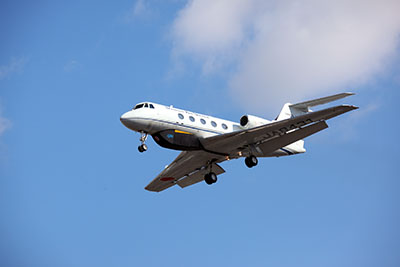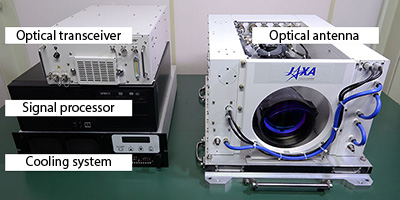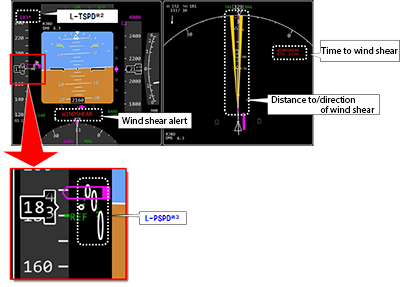Research & Development
JAXA promotes three research and development programs and a fundamental research program that underpins them.
R&D of onboard safety avionics technology to prevent turbulence-induced aircraft accidents (SafeAvio)
JAXA’s clear-air turbulence detection system successfully flight demonstrated
- The world’s first turbulence advisory function also confirmed to be effective -
From January 14 to February 10, 2017, JAXA performed flight demonstration tests on the turbulence-induced aircraft accident prevention system installed on a small jet aircraft. The main purpose of the flight tests was to evaluate the system’s capability in detecting clear-air turbulence during flight. Consisting of two major functions, a turbulence detection function and turbulence advisory function, the newly developed system is a lighter and higher-performance model than the conventional systems. It was developed as part of JAXA’s SafeAvio project.
Clear-air turbulence, or turbulence that occurs in clear-air conditions, has been impossible to detect with ground-based or aircraft-mounted weather radar equipment due to the lack of any clouds accompanying the uneven air. When a passenger aircraft enters turbulent airspace, the airframe experiences substantial shaking—and flying through unexpected turbulence has the potential to cause damage, including injuries to passengers or crew members.
The flight demonstration tests in January and February 2017 confirmed that JAXA’s system can detect clear-air turbulence 17.5 km ahead of the aircraft (based on the average of 16 total flights), which is the world’s longest detection range. A 17.5-km window means roughly 70 seconds for cruising aircraft (depending on cruising speed), allowing pilots to prepare for bumping into rough air in advance, such as turning on the seatbelt sign for passengers to prepare for hazardous shaking. By enabling the detection of clear-air turbulence during flight, the system could provide an innovative solution in preventing turbulence-induced injuries and damage.
JAXA also performed demonstration tests on the advisory function, which provides turbulence information to pilots. Upon detecting wind shear※1, the system could successfully relay the direction of and time to the turbulence to the pilot in a timely fashion via the developed cockpit display. According to pilots’ subjective evaluations on the advisory function, the system successfully met the pilots’ requirements. As encounters with wind shear during landing procedures can cause aircraft to lose lift, creating the potential for hard landings and other risks, advance knowledge of wind shear on the final approach and landing path definitely helps pilots make appropriate decisions, including go-around decisions, thereby helping safeguard against accidents.
JAXA will continue to research and develop technologies for ensuring safe aircraft operations.

The turbulence detection system is mounted under the front of the aircraft.

Turbulence detection system

Cockpit display with turbulence advisory function
(images from actual flight test)
- Wind shear
A rapid change in wind speed/wind direction - L-TSPD
Lidar-Target Speed; the value represents a target speed for preventing speed deviation - L-PSPD
Lidar-Predictive Speed, a speed prediction based on Lidar observation values; the ellipses represent the predicted speeds 5, 10, and 20 seconds out, while the length indicates the range of fluctuation in speed.
March 13, 2017